Del Monte Vegetable Beef Soup Recipe 1990s
Canned foods America grew up on
Childhood memories in a tin
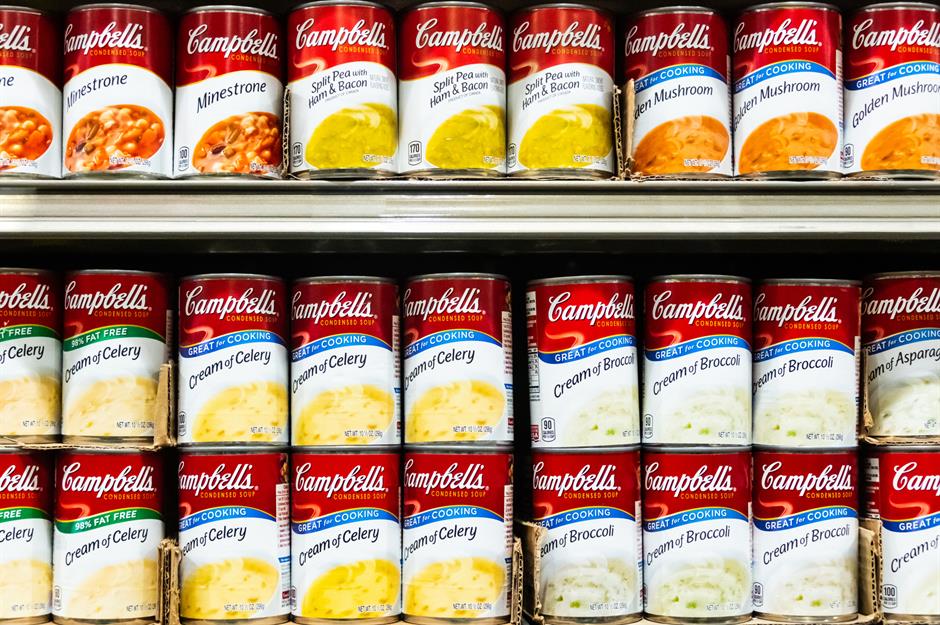
From the post-war home to the mod kitchen, canned food has been a staple of the American nutrition for decades. Here we delve into the cupboards of decades gone by to bring yous some of the almost nostalgic cans from your childhood. Get ready to take a bite out of yesteryear.
1940s: Chef Boyardee Beef Ravioli
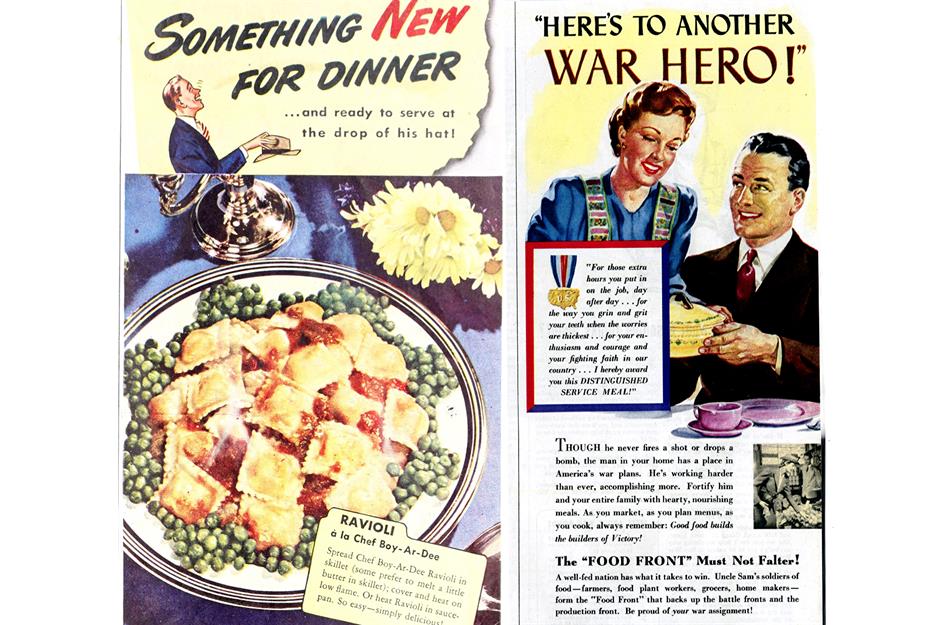
Internet Archive Book Images/Flickr/CC0; clotho98/Flickr/CC BY-NC ii.0
While canned food has its roots in the Napoleonic wars (1803–1815) and appeared in American stores as early every bit the 1800s, it became a true staple of America's nutrition in the 1940s. Brands such as Chef Boyardee (then Chef Boy-ar-dee) helped the 2nd World State of war effort by producing field rations. Chef Boyardee factories operated 24 hours a day during this time – their signature dish was beef ravioli in sauce which was described as existence as "truly Italian as the Tower of Pisa".
1940s: Campbell's Vegetable-Beef Soup
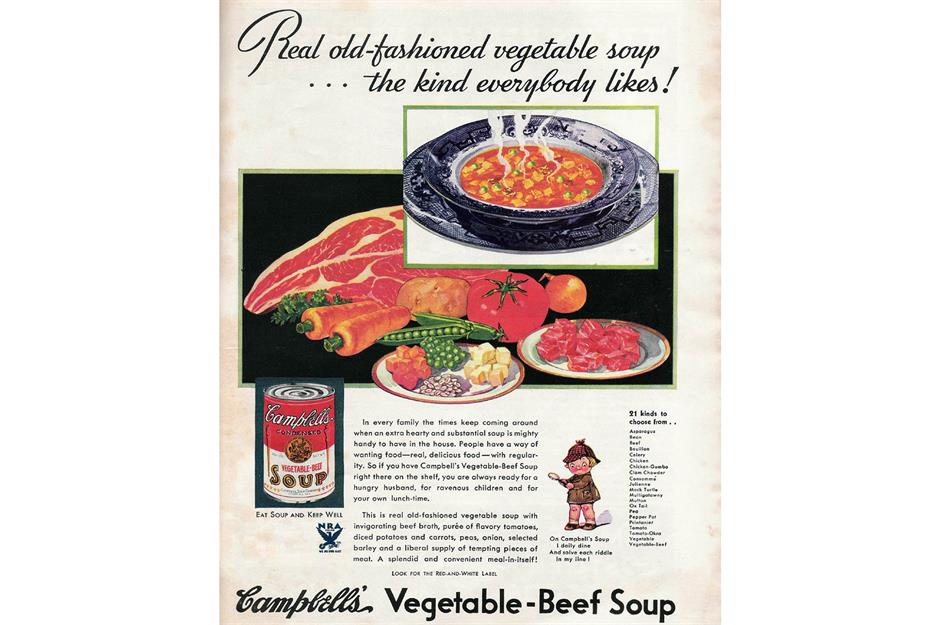
Another make that thrived during and immediately later the war years was Campbell Soup Company, meliorate known as Campbell's. It too provided army rations, while housewives back dwelling swore by the brand's condensed soup range for quick and piece of cake family suppers. A favourite option was the hearty Vegetable-Beef Soup (alongside Love apple and apparently Vegetable).
1940s: Dinty Moore Beefiness Stew
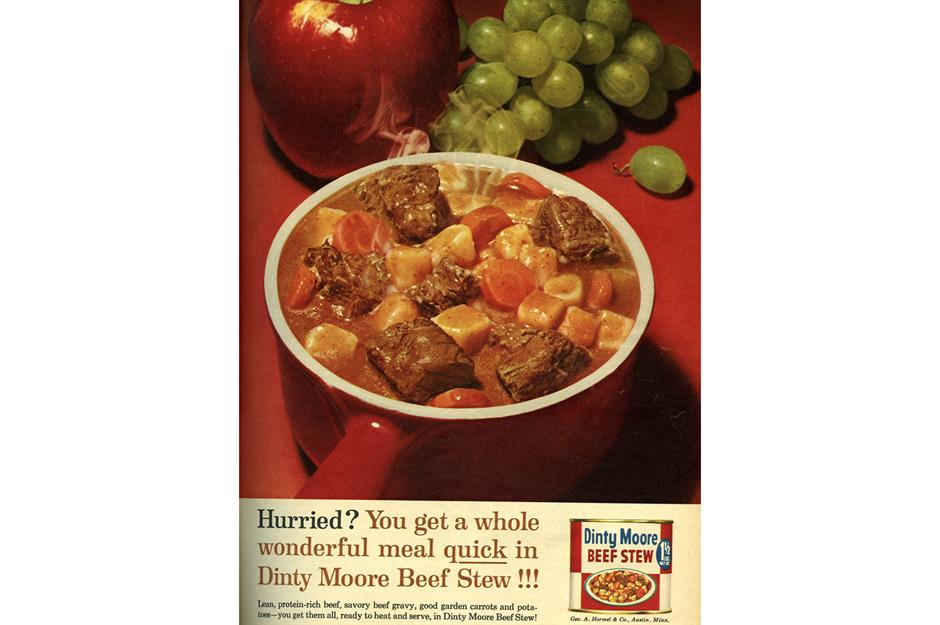
Umpqua/Flickr/CC Past-NC-ND ii.0
In the 1940s, some other canned legend flare-up onto the scene: Dinty Moore's Beef Stew. This cockle-warming batter of beef chunks, diced potatoes, carrots and gravy helped feed American troops during the Second World War and likewise served every bit a "whole wonderful meal quick" for families at abode.
1940s: Hormel Ham
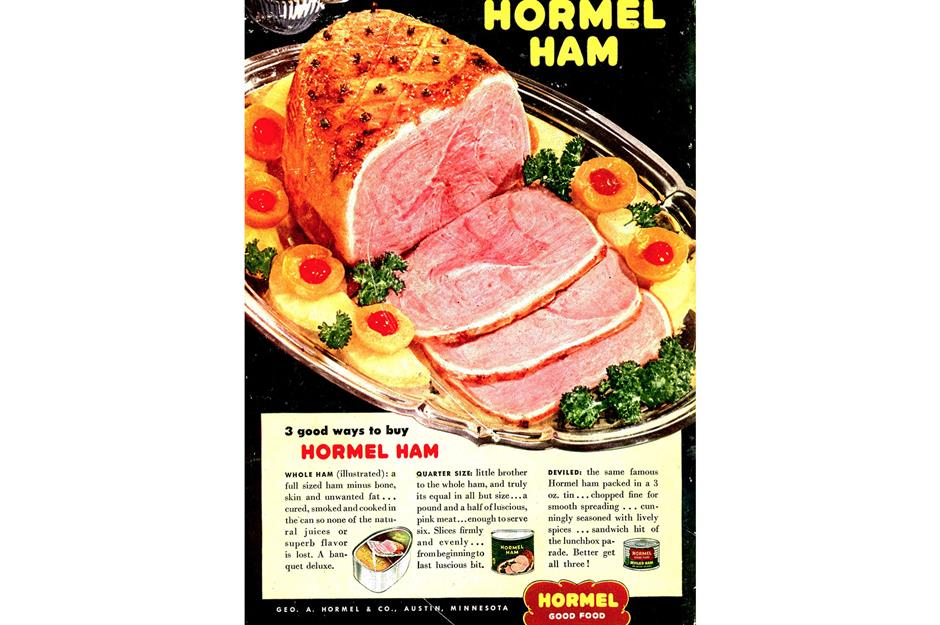
Don O'Brien/Flickr/CC BY 2.0
Hormel Foods (then George A. Hormel & Company) is credited as the commencement ever company to put ham in a tin can, in 1926. This canned ham was also used to feed the nation's troops. In fact, in the 1940s, millions of cans of meat per week were shipped overseas by Hormel for the U.s.a. military. Back home, the ham could exist bought in a range of sizes from "a feast palatial" whole ham to a 3oz (85g) can perfect for "the lunchbox parade".
1940s: Hormel Chili

Jasperdo/Flickr/CC BY-NC-ND two.0
There were plenty more feathers in Hormel'south cap. Other 1940s favourites included Hormel Chili, dubbed a great choice for tiffin or Lord's day supper. Hormel had such faith in the taste of its chilli that the company offered a "double your money back" guarantee. The make was also a purveyor of canned craven and the legendary SPAM meat (more than on that after...).
1940s: Niblets Make Whole Kernel Corn

clotho98/Flickr/CC Past-NC two.0
It wasn't just meat that made its way into a tin can. Brands such equally Niblets thrived in an era when having some vegetables available year-round was still a novelty and when convenience was male monarch. Hawked with the line "the only matter missing is the cob", this canned veg product promised an "old-time eating thrill" coupled with ease and speed.
1940s: Del Monte Fruit Cocktail
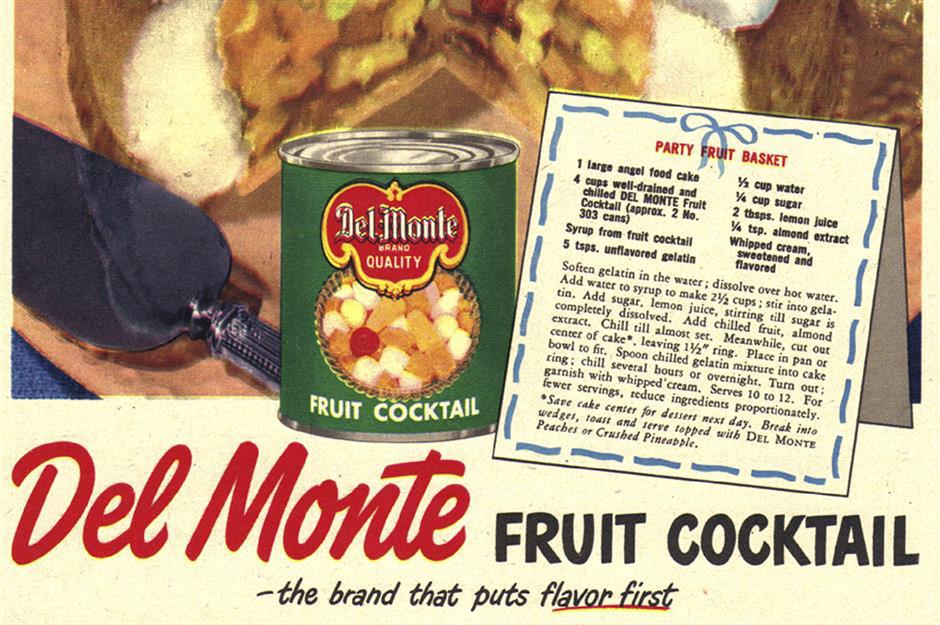
Jamie/Flickr/CC BY-NC 2.0
Another 1940s hero was the Del Monte Fruit Cocktail, a sugariness offering of pineapple, cherries, peaches, pears and grapes in a tin. Eaten as a quick snack or whipped into a fruit dessert, the cocktail became a colonnade of the American pantry during this decade. Del Monte even came upwardly with weird and wonderful recipes for its popular cocktail from a Party Fruit Handbasket (advertizement pictured) to a Buffet Party Loaf with tiffin meat (yeah, really).
1940s: Eagle Brand Sweetened Condensed Milk
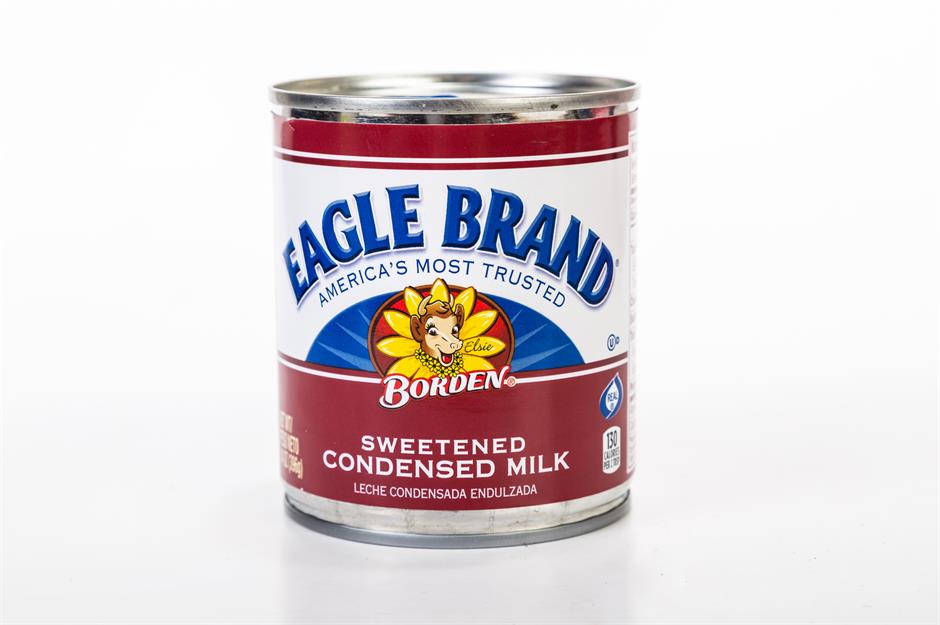
Warren Cost Photography/Shutterstock
What better fashion to stop off a fruit cocktail than with a glug of sweetened condensed milk – Eagle Brand to be exact. While the production dates correct back to 1856, feeding troops during the Civil War, it gained in popularity through the 1940s. It was given to soldiers in both the Starting time and Second World Wars, and served as a sweetness and satiating snack for those back at home.
1950s: SPAM
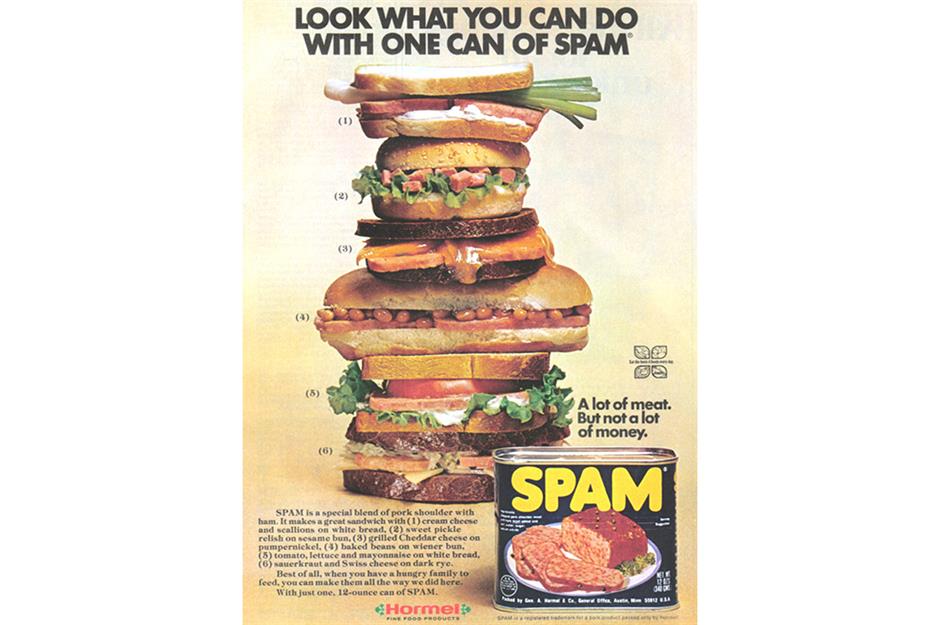
Jamie/Flickr/CC Past-NC ii.0
Past the 1950s, the Second Globe War was over but the canned food revolution had life in it yet. Many soldiers who returned from war had adult something of a penchant for hearty canned meats and warming canned broths and, with more women working than ever earlier, information technology was imperative that family unit meals were quick and simple. It was in this decade that SPAM, an essential war food, sold its one billionth can.
1950s: Prem
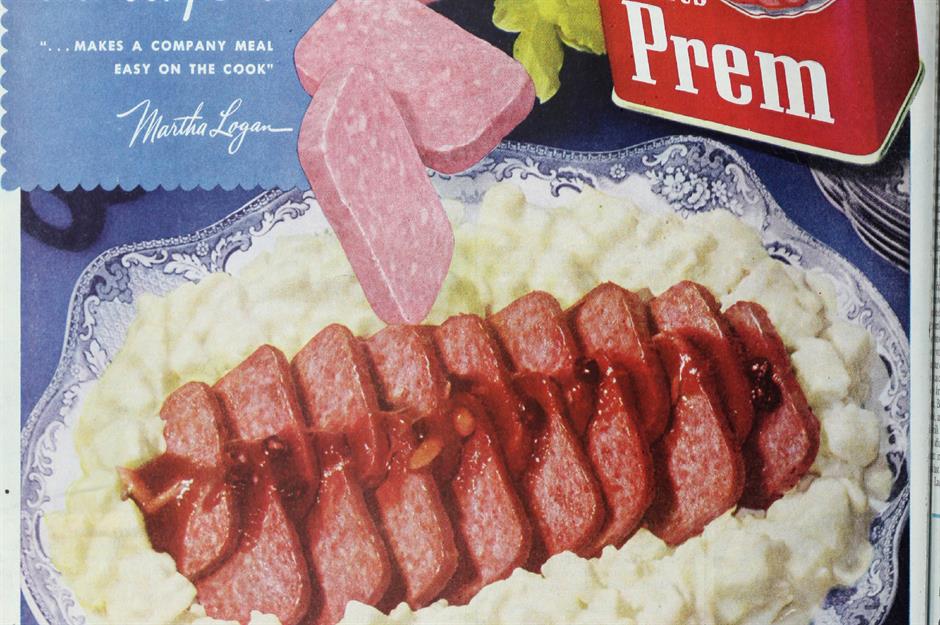
The Ladies' Domicile Journal/Wikimedia Eatables/CC0
While SPAM was the canned meat heavyweight in the 1950s, it wasn't without some contest. Prem was another brand of canned pork and beef luncheon meat that was shipped to soldiers during the Second Earth State of war, and remained pop in the decades subsequently. Here it'southward served pan-browned with jelly sauce and creamed potatoes.
1950s: Armour Star Treet
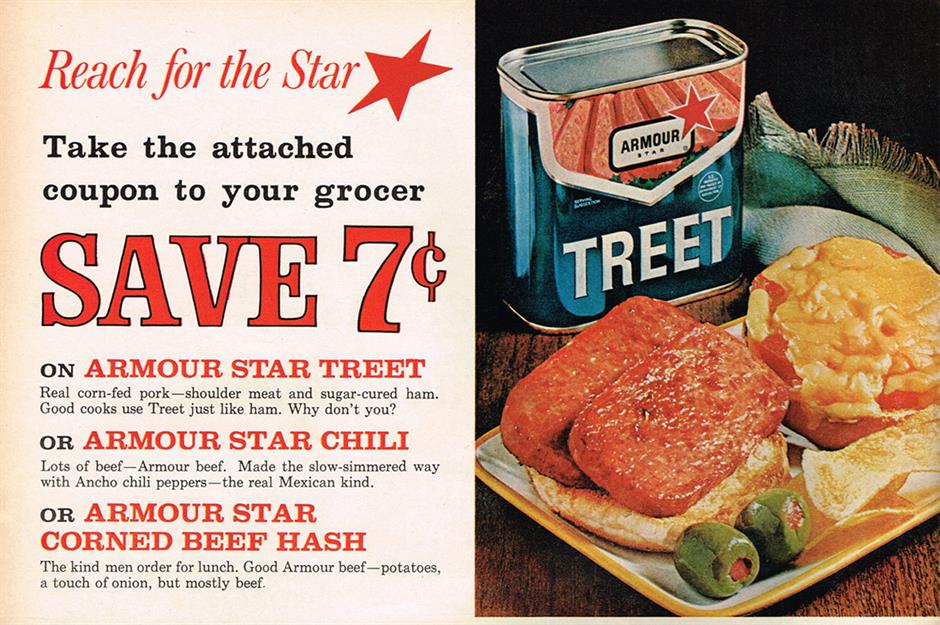
Jamie/Flickr/CC Past-NC 2.0
1950s: Armour Star Corned Beefiness Hash
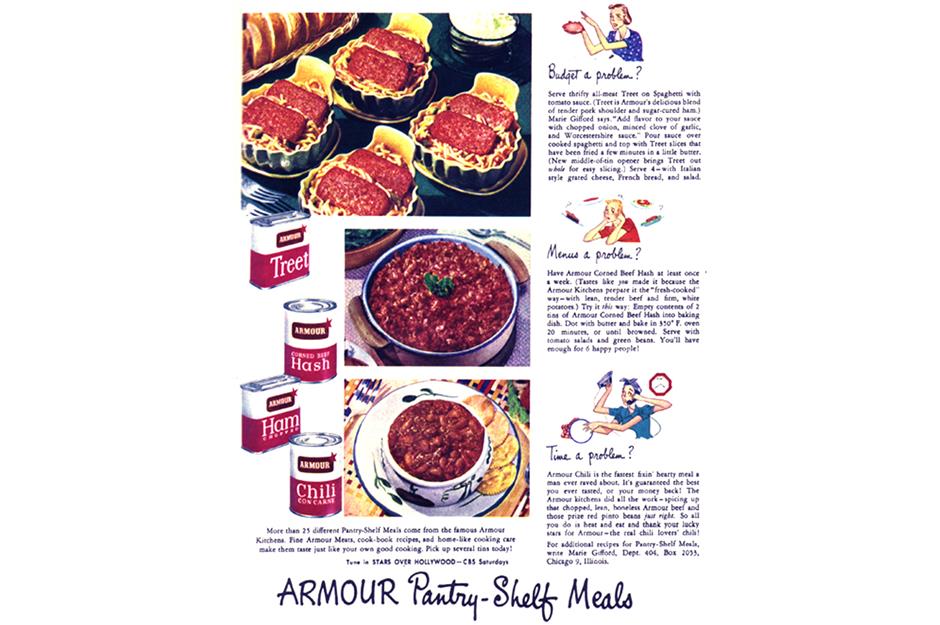
Jamie/Flickr/CC Past-NC 2.0
Lunch meat aside, entire meals were still existence canned beyond us, ready to be heated up for a quick supper. Armour Star remained a frontrunner through the 1950s, with its comforting Corned Beef Hash (a satisfying mix of corned beef and potatoes) a quick-dinner winner in this decade and beyond.
1950s: Van Campsite's Pork and Beans
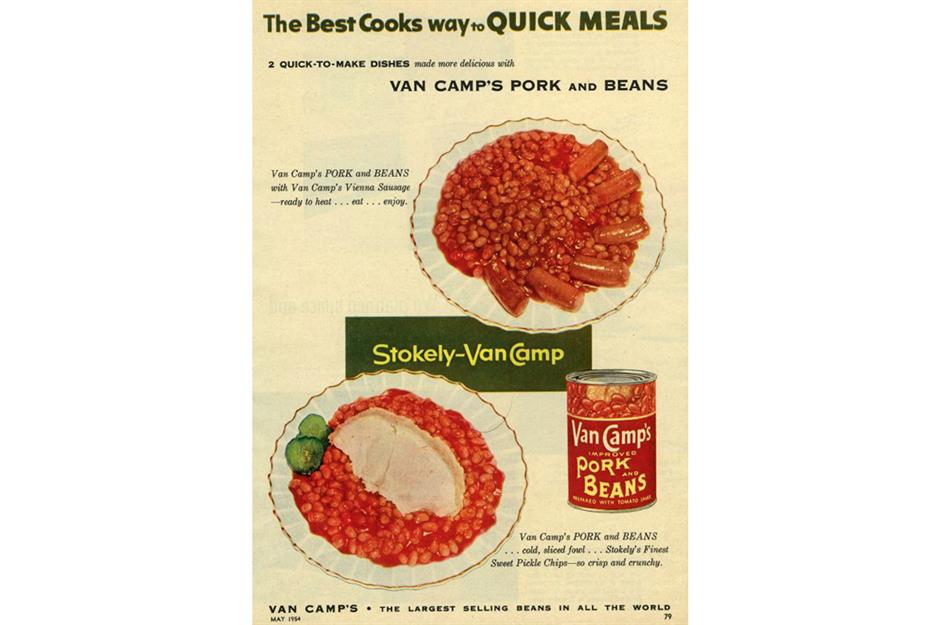
Umpqua/Flickr/CC By-NC-ND 2.0
Beans were another essential in the mail service-war pantry and Van Army camp professed themselves "the largest selling beans in all the globe" in the 1950s. The brand's perennially pop Pork and Beans were fabricated with Van Camp's Vienna sausage and served as a simple rut-and-get meal in busy households.
1950s: Van Camp'due south Chili Con Carne With Beans

Jamie/Flickr/CC BY-NC ii.0
While Pork and Beans was (and is) Van Camp's signature product, the brand was no one-trick pony. Its compact Chili Con Carne (pictured) was too a favourite during the post-state of war decades. Canned tamales sated America's early appetite for Mexican-way nutrient also.
1950s: Chef Boyardee Grated Cheese
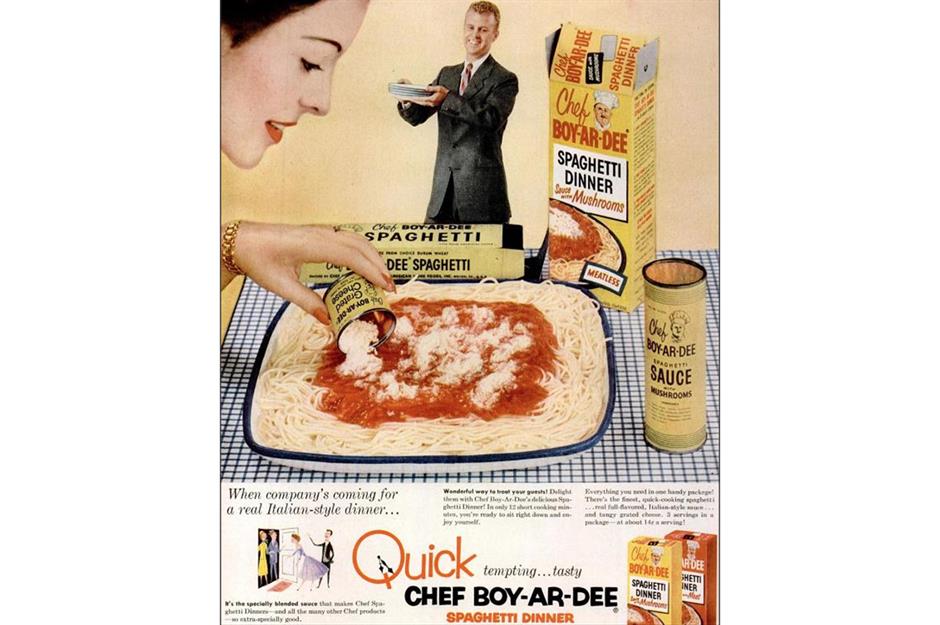
1950sUnlimited/Flickr/CC By 2.0
There was almost no limit on what companies would put into cans during the 1950s – leading brand Chef Boyardee even sold canned grated cheese, marketing it as the perfect accompaniment to its quick spaghetti dinner. It was also ideal for sprinkling on top of Boyardee's canned ravioli which maintained popularity during this decade too.
1950s: Veg-All Mixed Vegetables
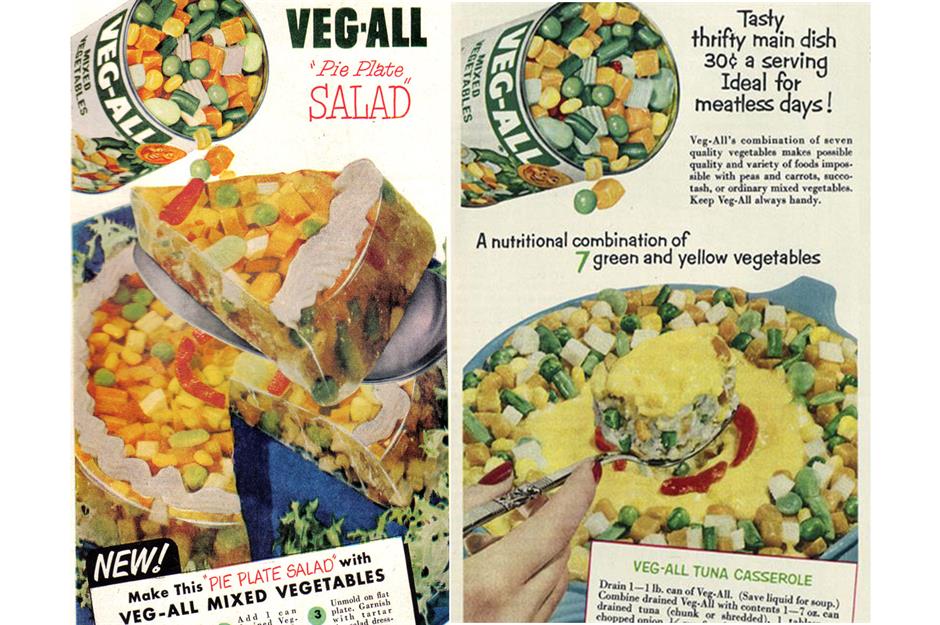
Jamie/Flickr/CC BY two.0; Classic Film/Flickr/CC By-NC 2.0
The craze for canned veg connected with Veg-All's Mixed Vegetables – a medley of carrots, potatoes, dark-green beans, peas and more – leading the mode. Also, more than ever before, canned nutrient companies were sharing recipe tips, suggestions and even entire cookbooks equally a marketing tool for their products. Here Veg-All suggests a Pie Plate Salad and a curious-looking tuna goulash.
1950s: Oscar Mayer Wieners
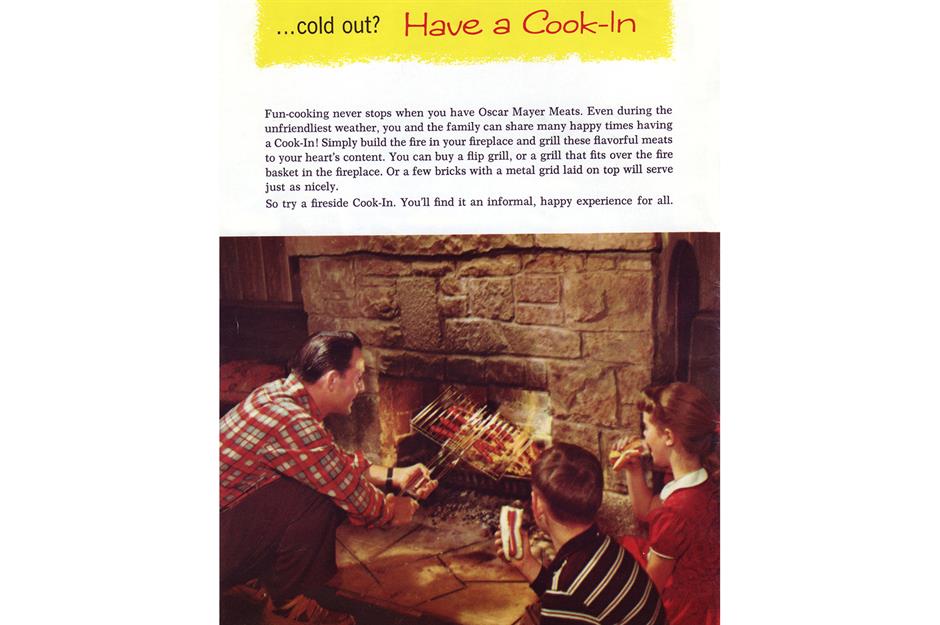
Andrew Kitzmiller/Flickr/CC Past two.0
Oscar Mayner was some other brand that cooked upward creative ways for consumers to savour its canned products. In the CookOut Fun cookbook, published in 1959, the brand professed that "fun-cooking never stops when you take Oscar Mayer meats". Information technology suggested grilling its pop sausages over a fireplace in the issue that bad weather condition ruins a planned cookout.
1950s: V-8 Vegetable Juices
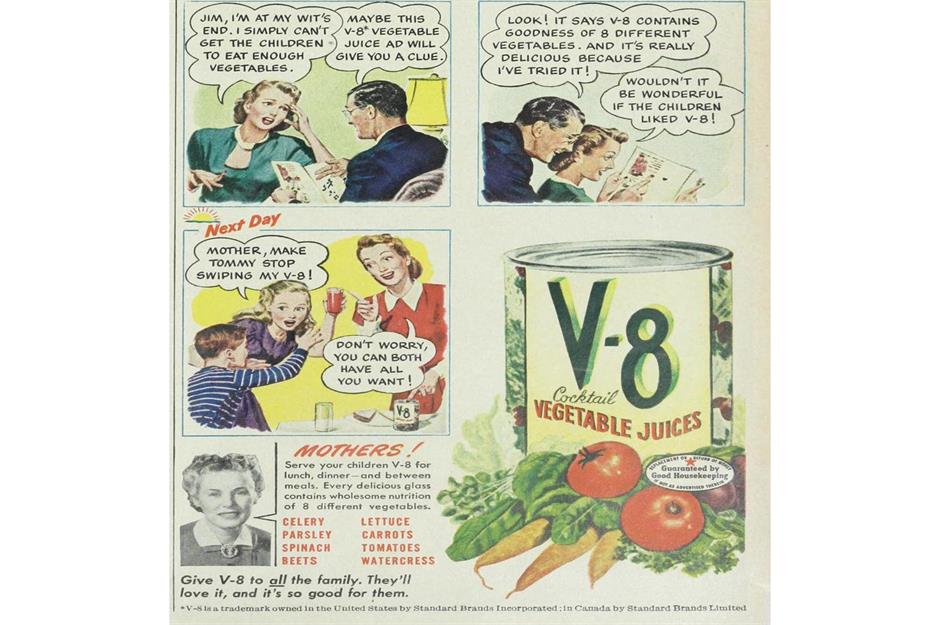
Internet Archive Book Images/Wikimedia Commons/CC0
V-eight Vegetable Juices was some other nutrient-packed canned food that gained traction in the mail-war era. Mothers concerned with their kids' vegetable intake would swear by this Skilful Housekeeping-recommended beverage, which was to be served for "dejeuner, dinner and in-between meals". The veggie cocktail, still on shelves today, included celery, parsley, spinach, beetroot, lettuce, carrots, tomato and watercress.
1960s: Campbell'due south Oyster Stew Soup
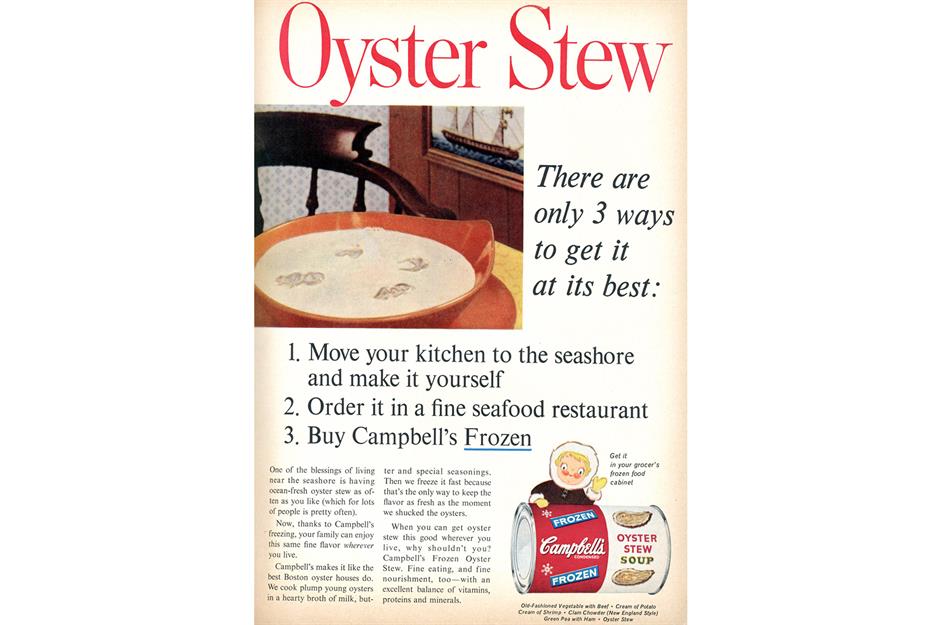
Come the 1960s, America's love thing with canned food showed no sign of abating. In the 1960s, pop art artist Andy Warhol memorialised the Campbell'south can in an iconic series of paintings that remain famous to this day. Innovative flavours such equally Oyster Stew became popular alongside Campbell's classics like Love apple and Vegetable.
1960s: Campbell's SpaghettiOs
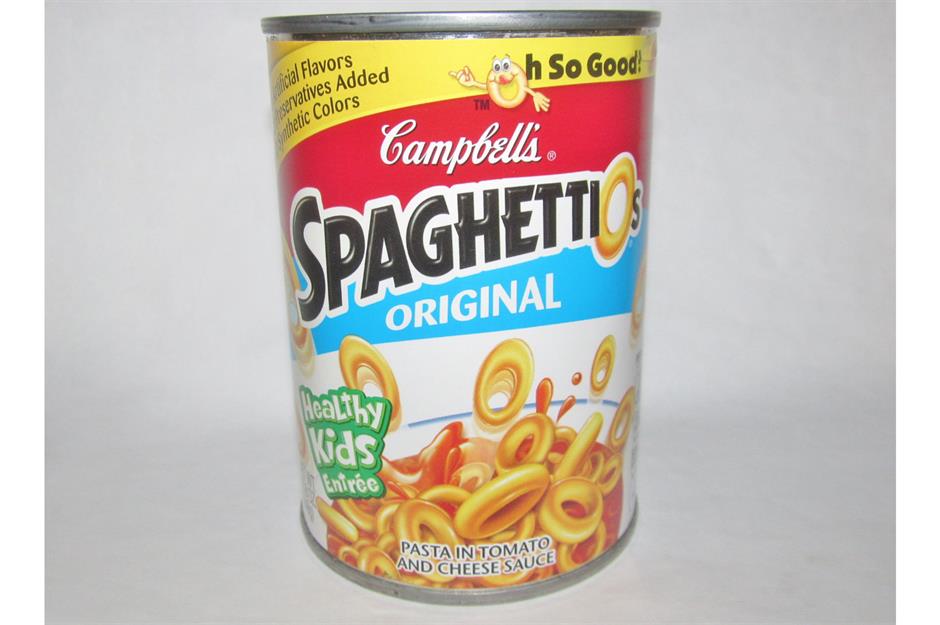
Willis Lam/Flickr/CC Past-SA ii.0
This was also the decade that SpaghettiOs (known every bit spaghetti hoops across the pond) were invented. They were marketed (by the Campbell's-owned Franco-American make) as "the neat new spaghetti y'all tin consume with a spoon", and they were a quick hit with convenience-loving 1960s Americans. Yous could purchase them with love apple and cheese sauce, with meatballs or little sliced franks.
1960s: Campbell's Alphabet Soup
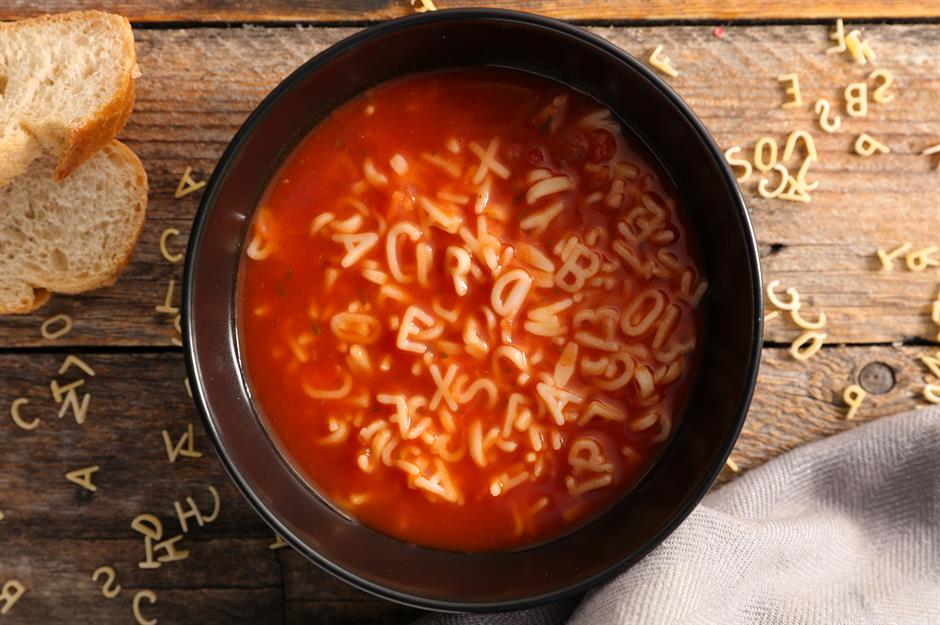
margouillat photograph/Shutterstock
The novel pasta shapes didn't stop at hoops. While Campbell'southward had sold a vegetable goop with pasta letters since 1915, it officially branded the soup The Alphabet Soup in the 1960s – a name it had already been given by families across America. Its popularity continued to soar in this decade and beyond with other brands following suit and selling their own versions.
These are the retro ingredients we wish would make a comeback
1960s: Chef Boyardee'south Beefaroni

Allen/Flickr/CC Past-NC-ND 2.0
A food guaranteed to feed your nostalgia is Chef Boyardee's Beefaroni. While this comforting dish of beef and macaroni in rich tomato sauce had been on the canned excursion for a while, a hit Boob tube advertizing in this decade cemented it in America's food psyche. The charming blackness-and-white ad saw hordes of children running through the streets singing the virtues of Beefaroni, earlier tucking into bowls of the stuff at long alfresco benches.
1960s: B&M Chocolate-brown Breadstuff

Mike McCune/Flickr/CC BY ii.0
From beef and macaroni to brown bread in a can – this is ane for our New England cousins. While canned bread may seem an odd concept to many across the country, B&Yard'due south offer has been a favourite with New Englanders for decades. And several visitor buying changes through the 1960s did little to dent its indelible popularity. You lot tin purchase the staff of life plain or with raisins, and New Englanders pair it with beans and ham or franks for a hearty breakfast or satisfying supper.
1960s: Franco-American Gravy

The 1960s also saw many brands build on their established offerings, bringing out new canned foods and flavours with twists on already well-loved classics. Ane case was Franco-American's new gravies. While their beef gravy was already a perennial favourite, it wasn't long before 1960s Americans were topping their fried chicken with Gilt Craven Gravy or swamping meatloaf in a savoury Brown Mushroom Gravy.
1960s: StarKist Tuna

rchappo2002/Flickr/CC BY-NC-ND 2.0
Many fun, foodie mascots launched in the 1960s and Starkist's slick Charlie the Tuna was 1 of them. Ads throughout the decade showed Charlie the Tuna's quest to get a StarKist Tuna, merely to be knocked back fourth dimension and time once more. "Sorry Charlie" became the brand'southward indelible catchphrase and, naturally, StarKist cans flew off the shelves.
1960s: Chun King Grub Mein

rchappo2002/Flickr/CC Past two.0
By the 1960s, Americans had developed a gustatory modality for canned Chinese-style food and the now-defunct Chun King, founded in the 1940s, was the market place leader. Sales surged through the 1950s and 60s, and Chow Mein with craven or mushroom was the brand's peak dish.
1960s: Dole Hawaiian Sliced Pineapple
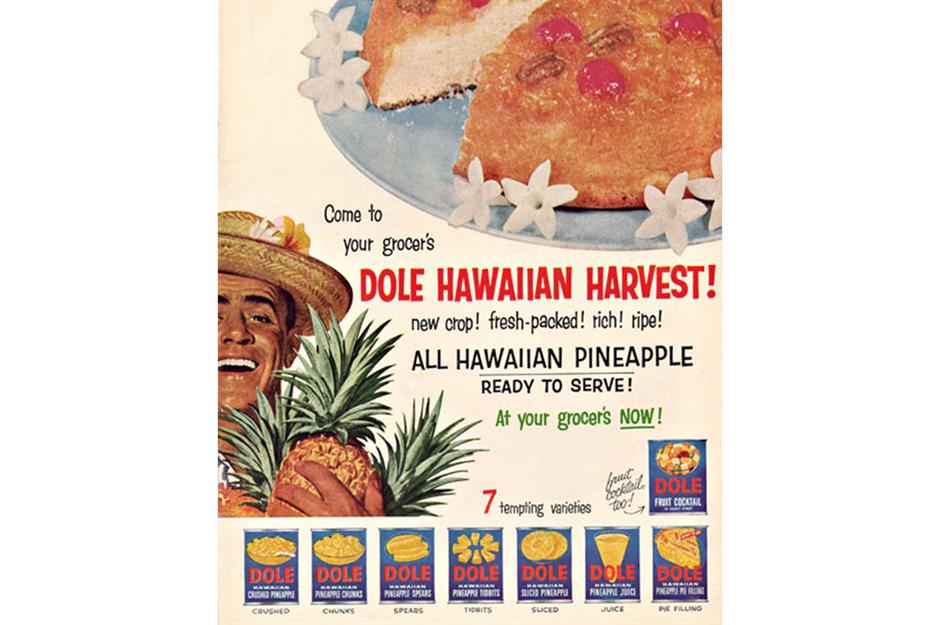
alsis35/Flickr/CC BY-NC 2.0
Pineapple upside-down cakes were a go-to sugariness care for throughout the 1960s and that meant canned pineapple slices often graced shopping lists. Leading brand Dole also sold its sugariness pineapple in all manner of other means: chunked, crushed, juiced and fifty-fifty in dandy little spears, perfect for dessert at the 1960s dinner tabular array.
1970s: Chef Boyardee Spaghetti and Meatballs
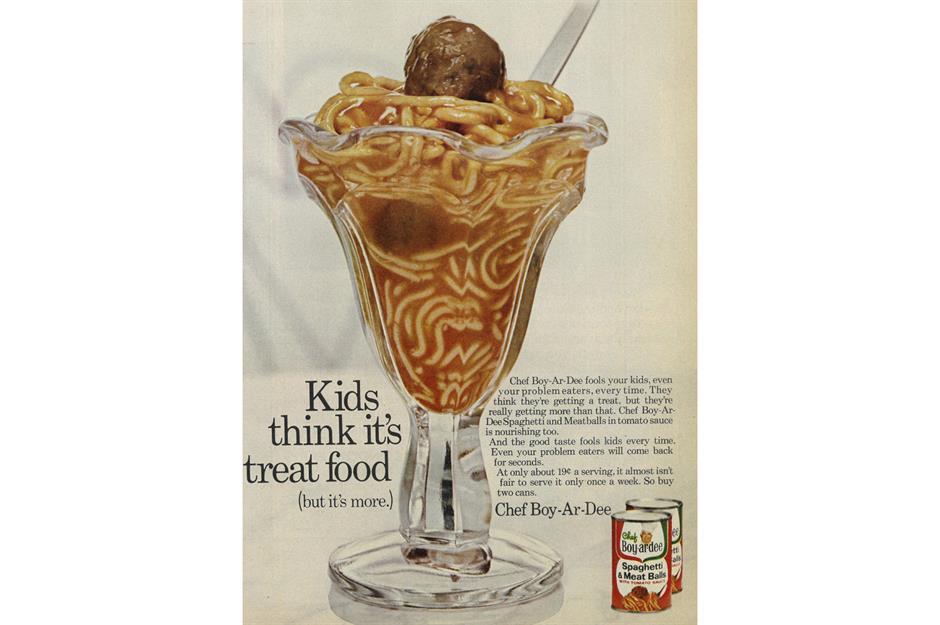
Archetype Motion picture/Flickr/CC Past-NC 2.0
The 1970s were dominated by creative ads and weird and wonderful recipe suggestions. These all helped cement Chef Boyardee Spaghetti and Meatballs' status as a decade favourite. In this 1970s advert, the warming canned dish is piled high similar an water ice cream sundae – plainly a ruse to get kids to tuck into their dinner.
1970s: Hunt's Manwich Original Sloppy Joe Sauce
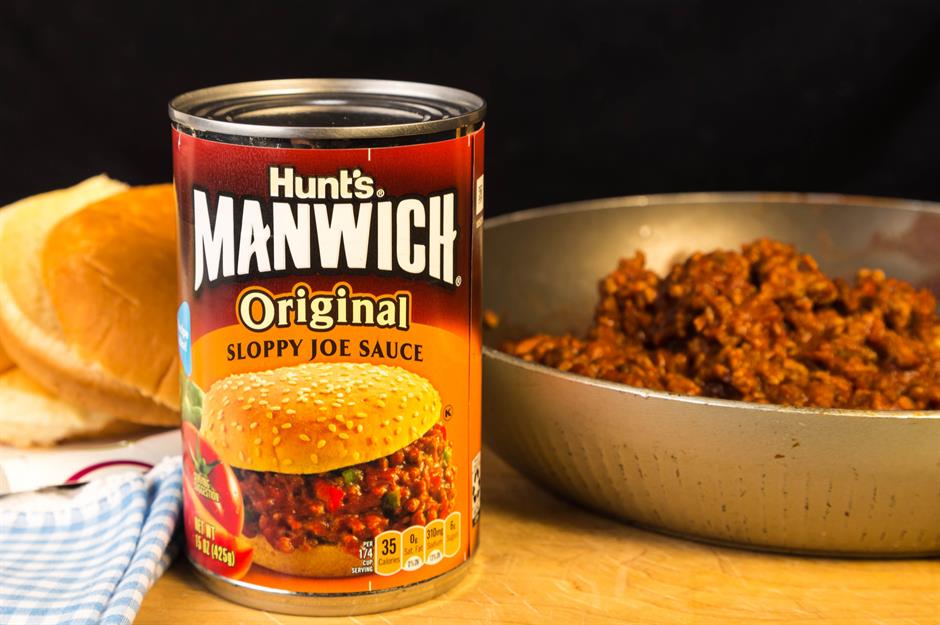
Warren Toll Photography/Shutterstock
The taste for meaty mains directly from a can continued throughout the decade. Hunt's Manwich Original Sloppy Joe Sauce was invented right at the end of the 1960s and proved popular through the 70s. For a quick evening repast, cooks would add the tomatoey sauce to basis beefiness and pile the mix into a hamburger bun – and voilà, a archetype sloppy joe. You can still purchase the mix in supermarkets today.
1970s: Campbell's Mesomorphic Soup

Mike Mozart/Flickr/CC BY ii.0
Some other canned classic to brand its debut in the 1970s was Campbell'due south Mesomorphic Soup. While the brand's condensed soup range had been popular for decades, this hearty offering was touted as a repast in a can – or "soup so chunky y'all'll be tempted to consume it with a fork". Seventies shoppers could cull between chunky chicken, beef, turkey or vegetable.
1970s: Progresso Soups
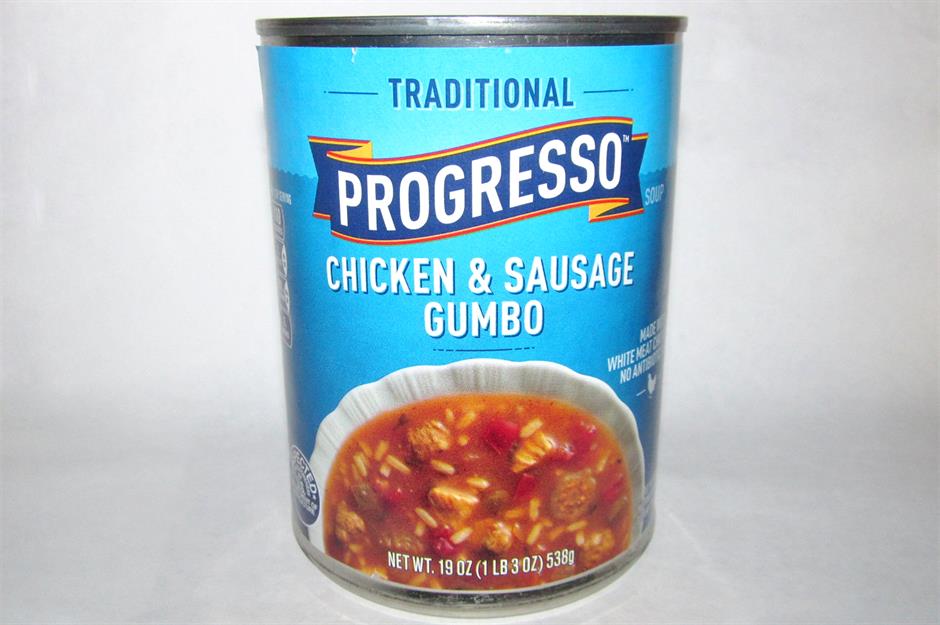
Willis Lam/Flickr/CC BY-SA 2.0
One of Campbell'south Mesomorphic Soups' principal competitors in the 1970s – and indeed still today – was Progresso, who had long sold chunky, fix-to-oestrus-and-serve broths. The brand had many popular flavours including Chicken Noodle, New England Clam Chowder, Craven and Sausage Gumbo, and Minestrone.
1970s: Former El Paso Tortillas
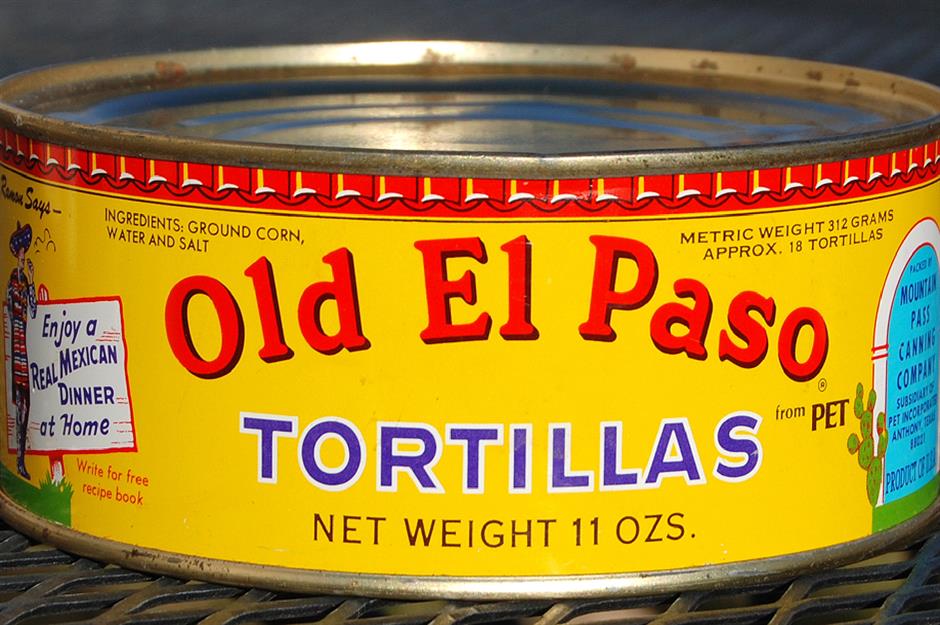
Allen/Flickr/CC By-NC 2.0
Tex-Mex was another nutrient trend to take off in the 1970s with writers such equally Diana Kennedy, writer of 1972's The Cuisines of Mexico, shedding calorie-free on the term. Quondam El Paso, actually founded in the 1930s, is credited with popularising the cuisine during this decade and the brand had plenty of canned foods available and so punters could whip up quick Tex-Mex-style meals at home. These included tomatoes, pinto beans and fifty-fifty tortillas.
1980s: Loma Linda Nuteena
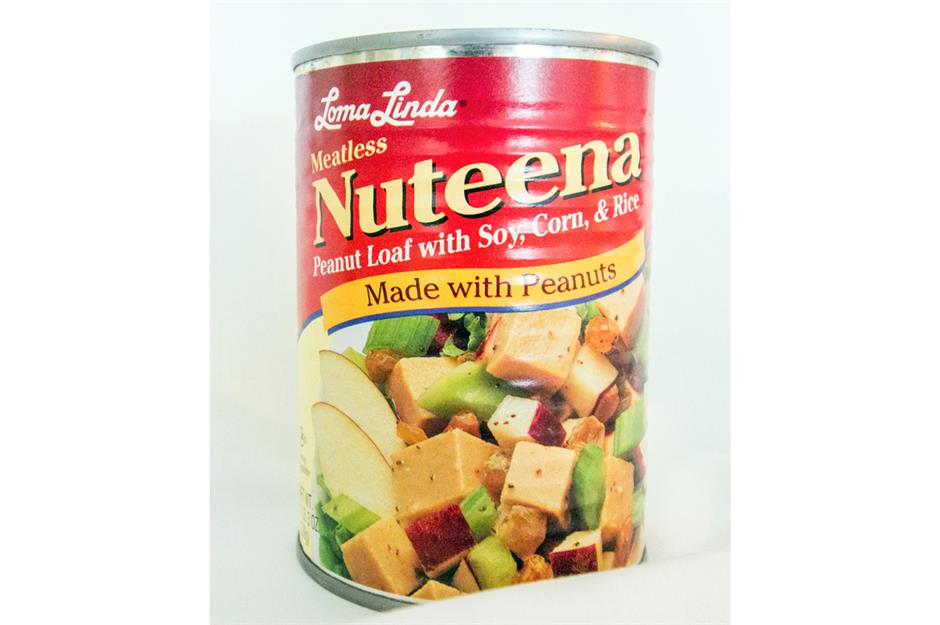
Mcneda/Wikimedia Commons/CC0
In the 1970s and 1980s, at that place were more than conversations around good for you eating and vegetarianism than at that place had been in previous decades, and brands similar Loma Linda (now La Hill Foods), which has roots in the 1890s, helped pb the accuse. Canned meat alternatives such as Loma Linda's Nuteena, a veggie loaf made from peanuts, graced kitchen cupboards.
1980s: Loma Linda Sizzle Franks
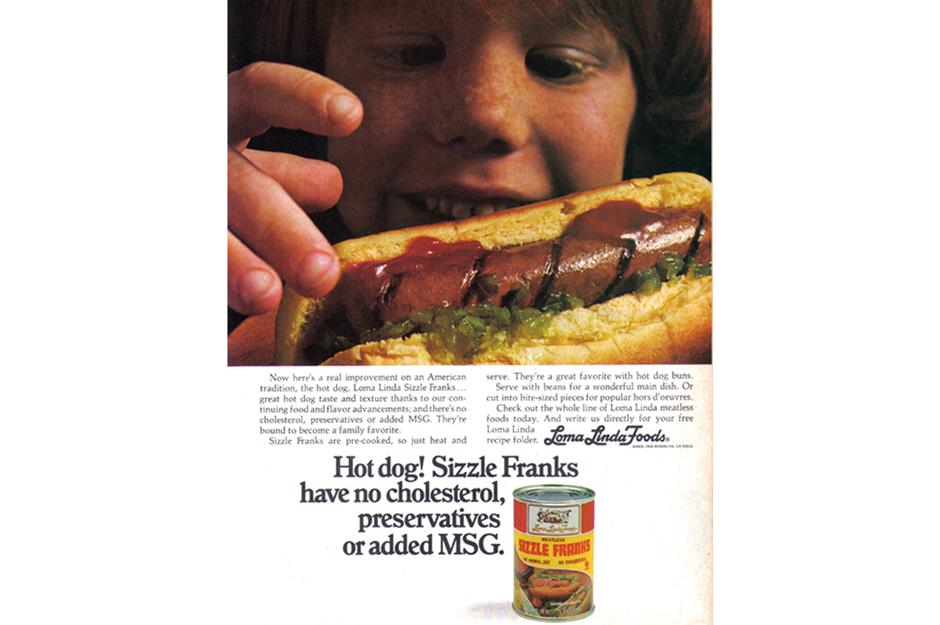
Jamie/Flickr/CC BY-NC 2.0
Loma Linda's meat-free alternatives also came in the form of veggie sausages called Sizzle Franks. They were fifty-fifty dubbed "a real improvement on an American tradition, the hot dog" and held up for their lack of added preservatives or MSG. Today La Colina still sells an assortment of canned goods, from nut meats and Vege-burgers to a plant-based seafood alternative chosen Tuno.
These are the shockingly bad nutrient nightmares we can't forget
1980s: Campbell's Healthy Request Soup
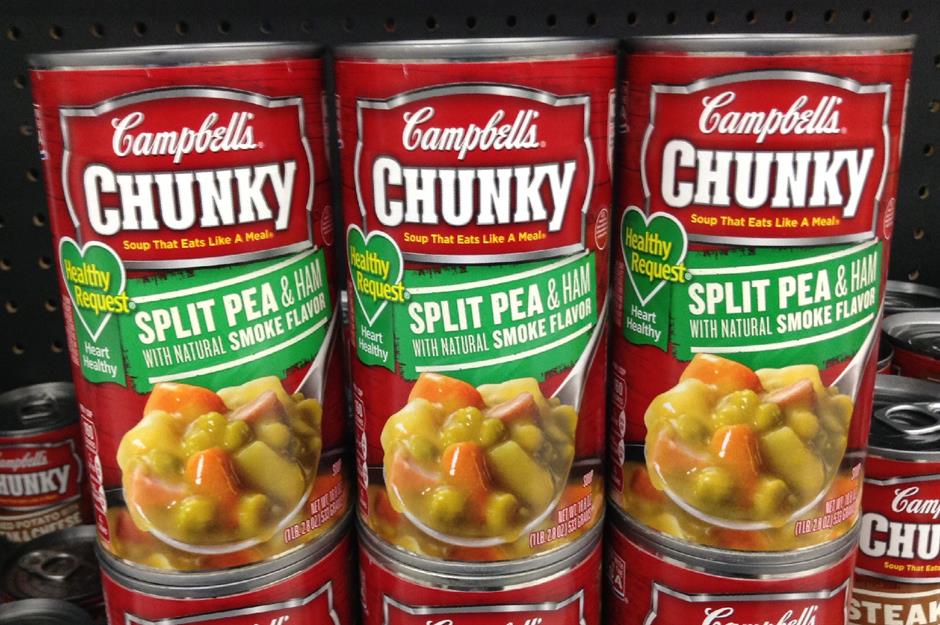
Mike Mozart/Flickr/CC BY two.0
The health-conscious cans continued with big dog Campbell's and their Healthy Request range, and then called Campbell's Special Request. The line launched in 1985 and was focused around heart wellness with lower saturated fat and cholesterol levels. Flavours included favourites similar Tomato and Chicken Noodle, and the range is notwithstanding sold today.
1980s: Allens Popeye Spinach

LunaseeStudios/Shutterstock
Canned spinach was another pantry staple, with canned food brand Allens using muscly cartoon character Popeye as a mascot and product name. In fact, in the 1980s, Alma in Arkansas, dubbed itself the "Spinach Capital of the Earth", since it was the location of the Allens company and its mounds of canned spinach.
1980s: Van Army camp's Beanee Weenee

Willis Lam/Flickr/CC BY-SA ii.0
Despite all the 'healthier' alternatives, in that location was still enough of room for some good old-fashioned meat and beans in a can. Van Camp's Beanee Weenees – baked beans with little frankfurter chunks – remained popular throughout this decade, specially for a quick Tv dinner.
1990s: Campbell's Dwelling Cookin' Soups (Homestyle)
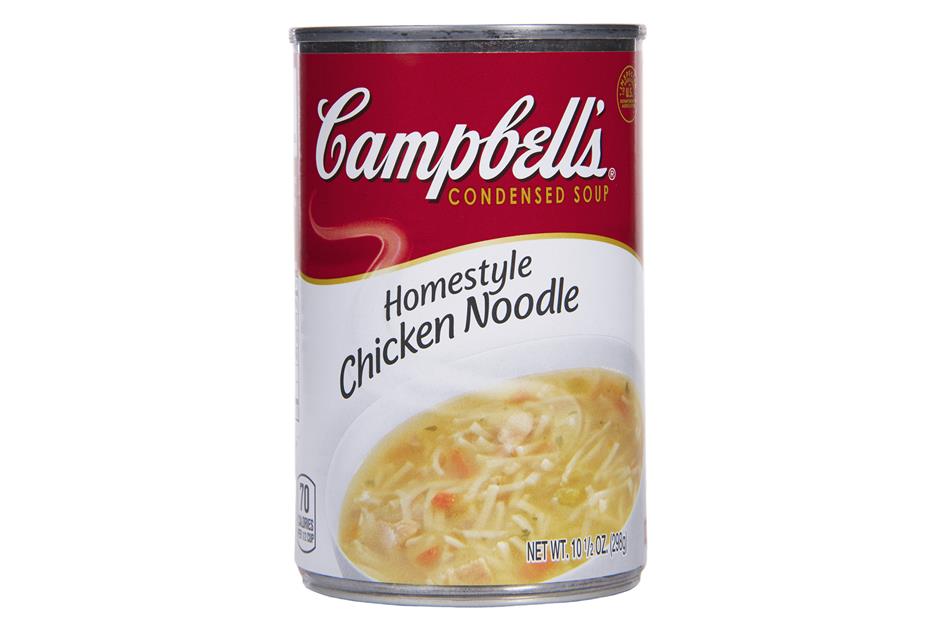
Sheila Fitzgerald/Shutterstock
When it came to cans, soup still reigned supreme through the 1990s and Campbell'due south was still king. In the 1980s, the mighty soup company introduced Home Cookin' Soup (later Homestyle) – hearty meat and veg broths designed to match a home-cooked repast. The range remained popular through the 1990s and thespian Jimmy Stewart even did the voice-over for the 90s TV ads.
1990s: Campbell's Condensed Cream of Broccoli Soup
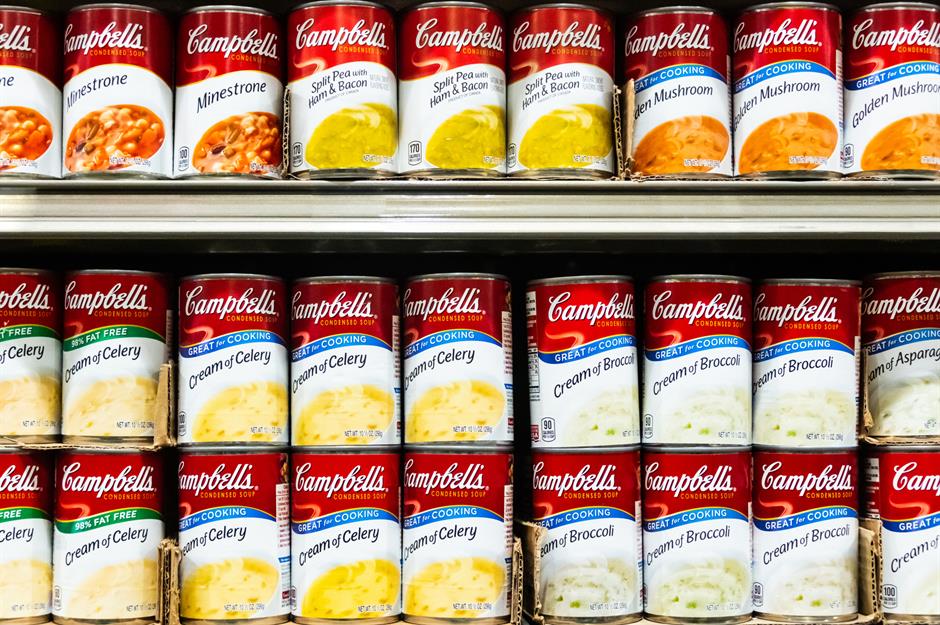
Campbell'south didn't balance on its honour though – in the 1990s, the company introduced another decade favourite and saw their "about successful new introduction in 55 years". If you entered an American kitchen in the 1990s, you could bet you'd encounter Campbell's Condensed Cream of Broccoli Soup in the closet. A creamy bowl of the stuff was – and is – perfect on a cold evening with a hunk of crusty bread.
1990s: SlimFast shakes
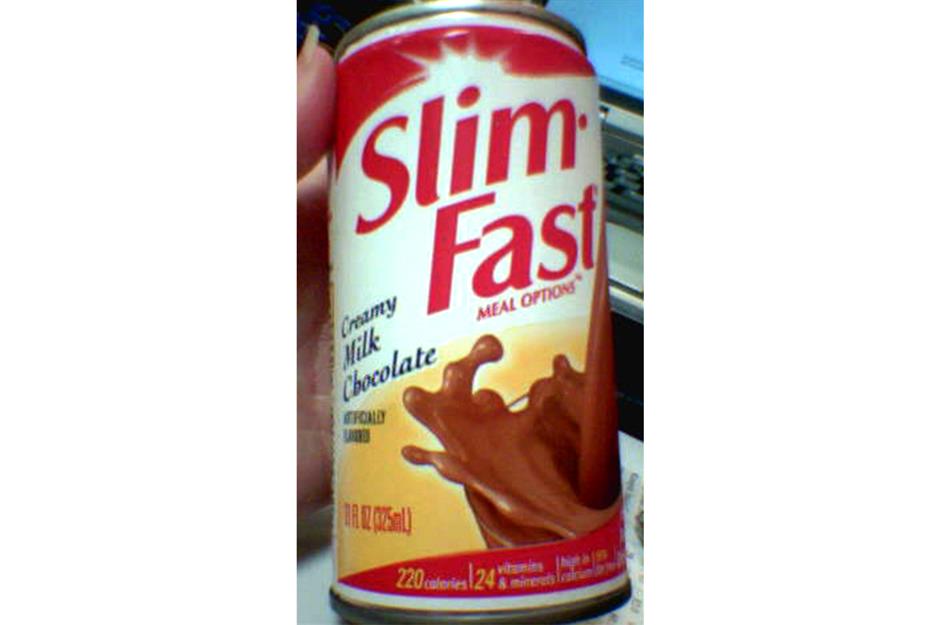
Judy Baxter/Flickr/CC By 2.0
While yous were unlikely to have boozer a SlimFast shake as a kid, you may well accept seen ane lurking in the kitchen closet. Nutrition company SlimFast, still in functioning today, surged in popularity through the 1990s, with celebrities waxing lyrical most the effects of its products. The meal replacement shakes in a can were among the nearly popular products.
1990s: Chef Boyardee Teenage Mutant Ninja Turtles Pasta Shapes
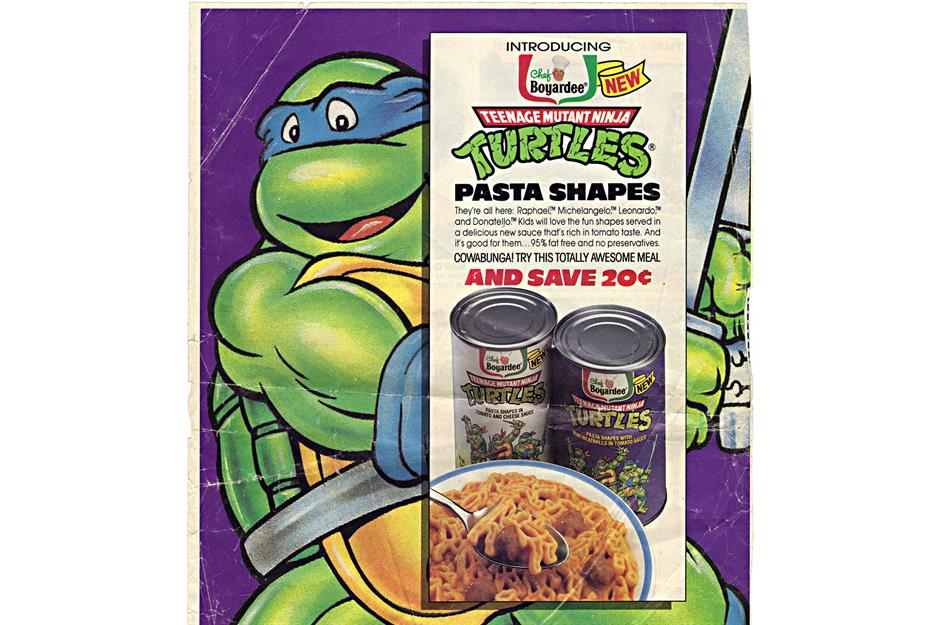
~ tOkKa/Flickr/CC Past-NC-SA 2.0
Come the 1990s, competition was ever on the up and brands had to think outside the box to keep customers coming back. Chef Boyardee knew just the affair. In 1991, to tie in with the popular Teenage Mutant Ninja Turtles comics and feature film, the brand introduced canned pasta shaped like the criminal offense-fighting cartoon characters. Needless to say, it was a hit with the kids.
2000s: Chef Boyardee Overstuffed Ravioli
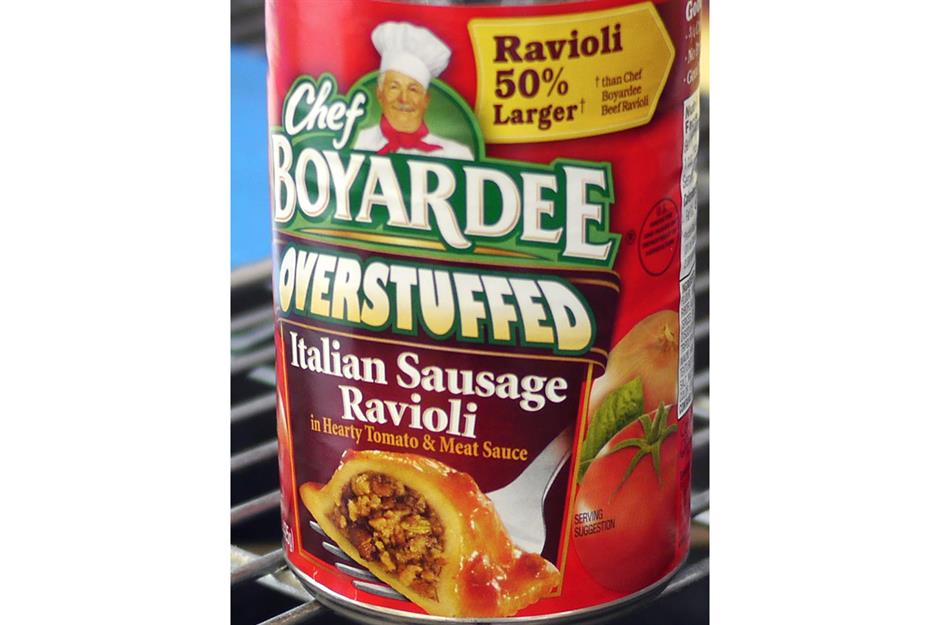
Dauvit Alexander/Flickr/CC BY-NC-SA 2.0
Age-erstwhile canned favourites prevailed throughout the Noughties, though ofttimes bigger was amend. Chef Boyardee's Overstuffed Ravioli, for instance, ruled cupboards and was held up equally a nutritious option for those with bigger appetites, especially kids. Italian Sausage Ravioli was the canned pasta of choice.
2000s: Chef Boyardee Colossal Spaghetti and Meatballs
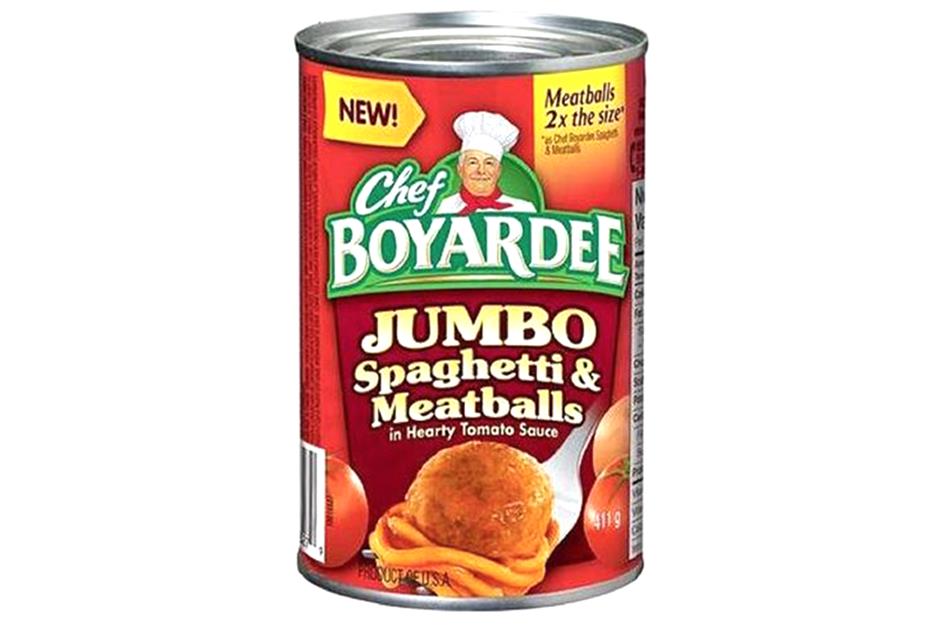
Chef Boyardee's classic Spaghetti and Meatballs got a mammoth makeover too. Its Jumbo Spaghetti and Meatballs saw the meatballs double in size, "for bigger kids with bigger appetites".
2000s: Campbell's Chicken Noodle Soup
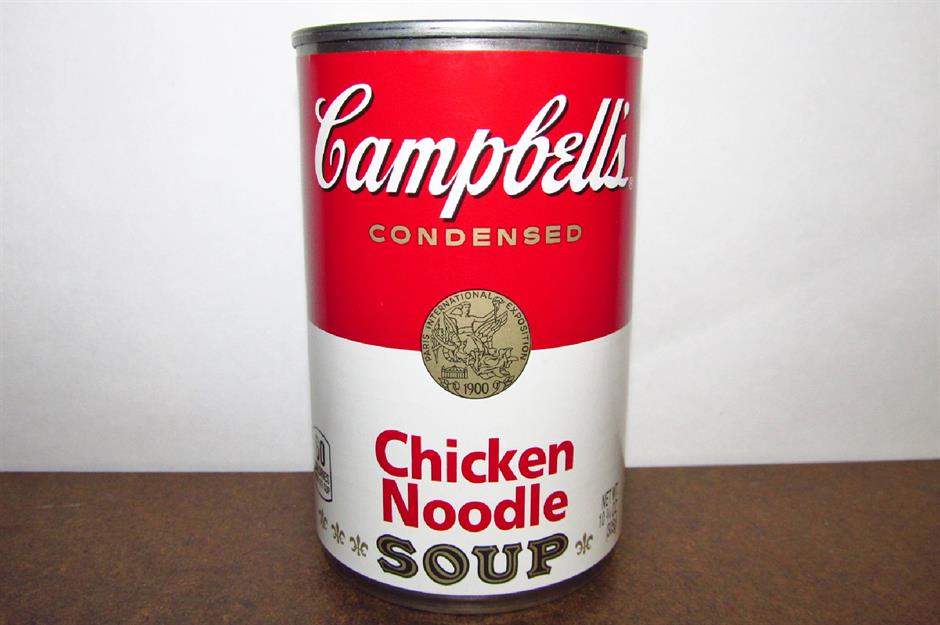
Willis Lam/Flickr/CC BY 2.0
2000s: Amy'southward Kitchen soups
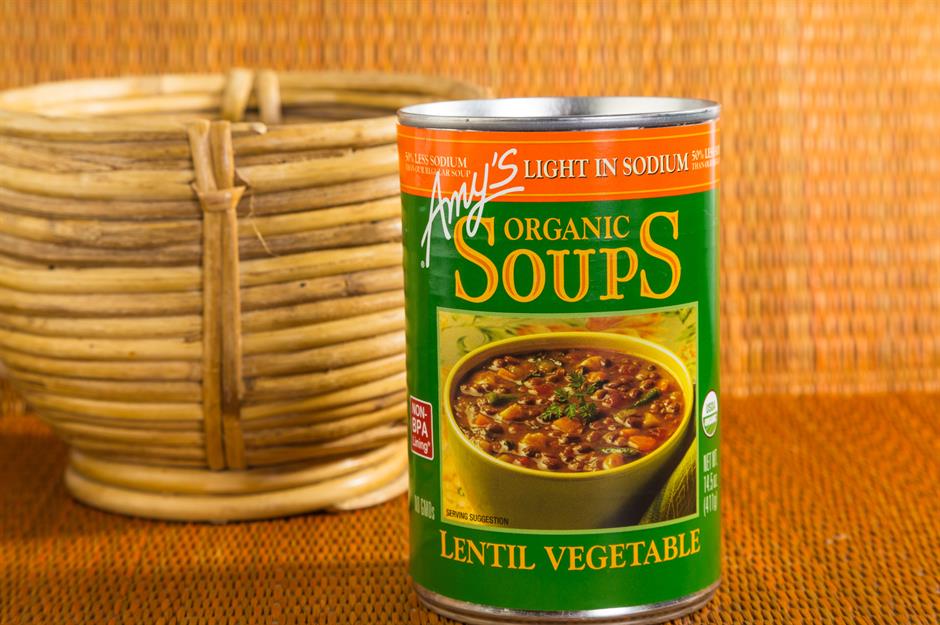
Warren Price Photography/Shutterstock
Springing upwards in the late 1980s, Amy's Kitchen thrived in the Noughties, offering an organic alternative to the biggest-selling soups on the market. Increasingly wellness-conscious consumers filled their cupboards with Amy's Kitchen'south organic Lentil Vegetable, Split Pea and Foam of Mushroom soups and go on to practise so today.
Now cheque out these retro dishes we remember deserve a comeback
Be the first to comment
Do you want to annotate on this article? You lot need to be signed in for this feature
gonzalezsirly1973.blogspot.com
Source: https://www.lovefood.com/gallerylist/92722/canned-foods-america-grew-up-on
0 Response to "Del Monte Vegetable Beef Soup Recipe 1990s"
Post a Comment